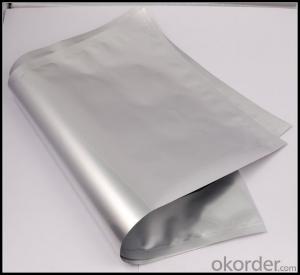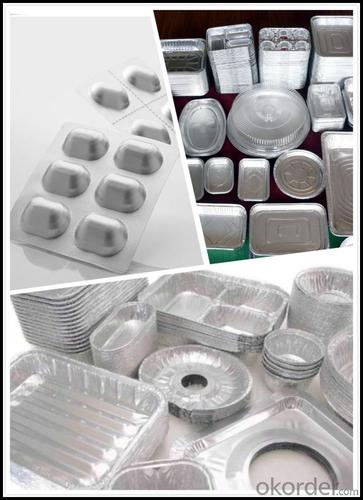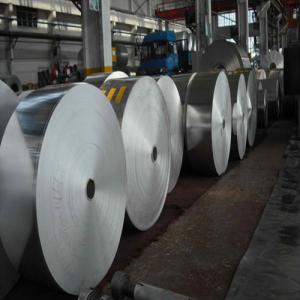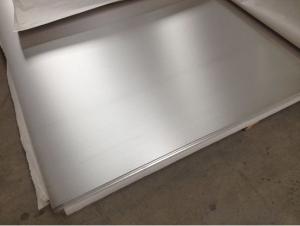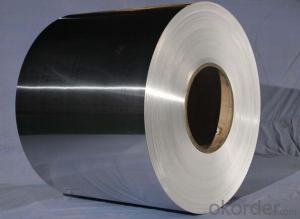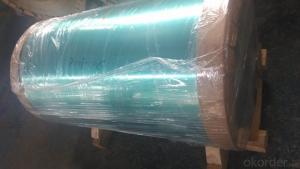2024 5052 5083 6061 7075 Aluminum Batten Strips Aluminum Sheet
- Loading Port:
- Tianjin
- Payment Terms:
- TT OR LC
- Min Order Qty:
- 1 m.t.
- Supply Capability:
- 4999 m.t./month
OKorder Service Pledge
OKorder Financial Service
You Might Also Like
Specification
1. Specification of Aluminum
1) Alloy | 1050, 1060,1100, 3003 3004 3105 3005 5005 5052 etc |
2) Temper | O/H12/H14/H1/H18/H32/H34/H36/H38//H111/H112/H116/H321/T6/T651/T3/T351 etc |
3) Thickness | 0.1mm to 6mm |
4) Width | 20mm to 3300mm |
5) Coil weight | 100kgs to 6 tons depends on actual requirement |
6) Core material | Aluminum alloy |
7) Coil Inner diameter | 76mm, 152mm,or as required |
2. Application of Aluminum
(1).Interior: wall cladding, ceilings, bathrooms, kitchens and balconies, shutters, doors...
(2).Exterior: renovations...
(3).Advertisement: display , signboards, fascia, shop fronts...
3. Feature of Aluminum
Aluminum alloys have been the primary material of choice for structural components of aircraft since about 1930. Although polymer matrix composites are being used extensively in high-performance military aircraft and are being specified for some applications in modern commercial aircraft, aluminum alloys are the overwhelming choice for the fuselage, wing, and supporting structure of commercial airliners
4. Certificate:
SGS and ROHS(if client request, paid by client), MTC(plant provided), Certificate of Origin(FORM A, FORM E, CO), Bureau Veritas and SGS (if client request, paid by client), CIQS certificate
5. Image of Aluminum


6. Our Service
1. Reply your enquiry in 24 working hours. |
2. OEM, buyer design, buyer label services provided. |
3. Exclusive and unique solution can be provide to our customer by our well traned and professional engineers and staffs. |
4. We can provide free sample for your check |
5. We have the certification of ISO 9001 |
6. Timely delivery |
7. Special discount and protection of sales area provided to our distributor. |
8. Good after-sale service. |
7. FAQ
Q: What is the produce prase? | ||||
A: Normally it would be 40days after received your deposit. | ||||
Q: Can you provide free samples? | ||||
A: Yes, free samples will be sent to you on freight at destination. | ||||
Q: Can I get your latest catalogue? | ||||
A: Yes, it will be sent to you in no time. | ||||
Q: What is the MOQ? | ||||
A: 3 tons | ||||
Q: What are your payment terms? | ||||
A: We accept L/C, D/A, D/P, T/T, West Union,etc. |
- Q: What benefits can be gained from incorporating aluminum strips in construction projects?
- <p>Aluminum strips offer several advantages in construction, including high strength-to-weight ratio, which means they are strong yet lightweight. They are also resistant to corrosion, making them suitable for outdoor applications and harsh environments. Aluminum strips are easy to work with, allowing for easy installation and customization. They are also energy-efficient, as they reflect heat and can help reduce cooling costs. Additionally, aluminum is recyclable, contributing to sustainability and reducing waste.</p>
- Q: What benefits does aluminum offer as a roofing material compared to other metals?
- <p>Aluminum strips for metal roofing offer several advantages over other types of metal roofing. They are lightweight and easy to install, reducing labor costs. Aluminum is highly resistant to corrosion, ensuring a long lifespan and low maintenance. It also reflects heat well, which can help keep buildings cooler and reduce energy costs. Additionally, aluminum is recyclable and can be produced in various colors, making it an environmentally friendly and aesthetically versatile choice.</p>
- Q: Is it possible to utilize aluminum strips in the construction of solar panels?
- <p>Yes, aluminum strips can be used in the construction of solar panels. They are often utilized as a component in the framing or as a conductive material in the solar cell's structure. Aluminum is lightweight, durable, and has good thermal conductivity, which makes it suitable for various applications within solar panel design. It can be used to create a protective frame, enhance heat dissipation, or serve as a part of the electrical conductors within the panel.</p>
- Q: What are the environmental regulations that impact the production and usage of aluminum strips?
- <p>Yes, there are several environmental regulations that affect the production and use of aluminum strips. These include regulations on emissions, waste disposal, and energy consumption. For instance, the European Union's Industrial Emissions Directive sets standards for emissions from aluminum production facilities. In the United States, the Environmental Protection Agency (EPA) enforces regulations such as the Clean Air Act and Resource Conservation and Recovery Act (RCRA), which impact how aluminum is produced and used. These regulations aim to minimize pollution, conserve resources, and promote recycling, thereby influencing the aluminum industry's practices globally.</p>
- Q: This question asks for a method to determine the weight of a specific length of aluminum strip.
- <p>To calculate the weight of a certain length of aluminum strip, you need to know the strip's length, width, thickness, and the density of aluminum. The density of aluminum is approximately 2700 kg/m鲁. The formula to calculate the weight is: Weight = (Length 脳 Width 脳 Thickness 脳 Density) / 1000. Convert all measurements to consistent units (SI units are preferred). For example, if you have a strip that is 1 meter long, 0.01 meters wide, and 0.001 meters thick, the weight would be calculated as follows: (1 脳 0.01 脳 0.001 脳 2700) / 1000 = 0.027 kg.</p>
- Q: Is it possible to utilize aluminum strips as a material for insulating interior walls?
- <p>Aluminum strips are not typically used for interior wall insulation. Insulation materials are designed to provide thermal resistance, and aluminum is a good conductor of heat, which makes it unsuitable for insulation purposes. Common insulation materials include fiberglass, mineral wool, and polyurethane foam, which are effective at reducing heat transfer. Aluminum strips might be used in construction for other purposes, such as reinforcement or as a vapor barrier, but not for insulation.</p>
- Q: This question asks about the expected duration that aluminum strip siding can last on a building after it has been installed.
- <p>The lifespan of an aluminum strip siding installation can vary, but on average, it is estimated to last between 20 to 40 years. This range is influenced by factors such as the quality of materials, installation techniques, and the environmental conditions the siding is exposed to. Proper maintenance, such as regular cleaning and inspection for damage, can help extend the life of aluminum siding. However, it's important to note that with advancements in materials and coatings, some modern aluminum siding products may offer even longer lifespans.</p>
- Q: Is it possible to install aluminum siding on a historic building without compromising its aesthetic or structural integrity?
- <p>Using aluminum siding on a historic building can be done without damaging its appearance or structure if done correctly. It's crucial to ensure that the siding is installed in a manner that respects the building's historical integrity. This often means using siding that closely matches the original materials in terms of color and texture, and installing it in a way that doesn't alter the building's structural elements. Consulting with historic preservation experts and adhering to local preservation guidelines is essential to maintain the building's historic character while providing the benefits of modern siding materials.</p>
- Q: Explain the environmental effects of utilizing recycled aluminum.
- <p>The use of recycled aluminum has a significant positive impact on the environment. It reduces the need for mining bauxite, which is the primary source of aluminum, thereby decreasing deforestation and habitat destruction. Recycling aluminum also conserves energy, as it requires only 5% of the energy needed to produce aluminum from raw materials. This energy conservation leads to reduced greenhouse gas emissions, contributing to the fight against climate change. Additionally, recycling aluminum reduces the amount of waste sent to landfills, lessening the environmental burden of waste disposal. Overall, the use of recycled aluminum promotes sustainability and helps protect natural resources.</p>
- Q: This question asks for methods to identify if the roof material is aluminum strips.
- <p>To determine if your roof is made of aluminum strips, you can look for the following characteristics: 1) The roof has a shiny, metallic appearance, which is typical of aluminum. 2) The strips are lightweight and flexible, making them easy to handle. 3) They are often interlocking, which is a common feature of aluminum strip roofing. 4) Check for any manufacturer's markings or labels that might indicate the material. If you're unsure, a professional roof inspector can help confirm the material by examining the roof closely or taking a small sample for testing.</p>
Send your message to us
2024 5052 5083 6061 7075 Aluminum Batten Strips Aluminum Sheet
- Loading Port:
- Tianjin
- Payment Terms:
- TT OR LC
- Min Order Qty:
- 1 m.t.
- Supply Capability:
- 4999 m.t./month
OKorder Service Pledge
OKorder Financial Service
Similar products
Hot products
Hot Searches
Related keywords
